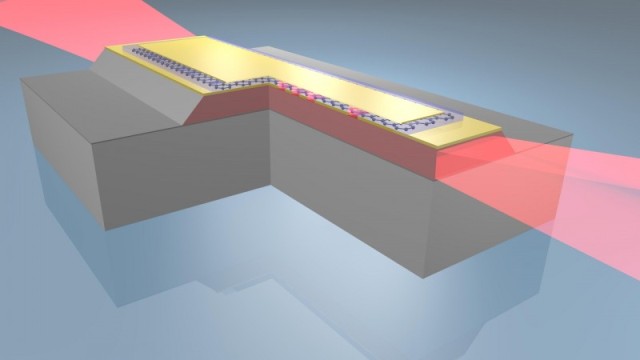Jan 19 2016
Researchers, headed by Sir Kostya Novoselov and Dr Subhasish Chakraborty from the University of Manchester, have discovered graphene’s ability to control terahertz laser frequency. This capability could open up new possibilities for terahertz lasers.

The study results have been published in the journal, Science. This new technology could be used as an alternative to X-rays in next-generation scanning systems, and to achieve higher internet bandwidth.
Terahertz technology exists between infrared and microwave frequencies on the electromagnetic spectrum, and they can accurately scan without causing any damage to the materials, unlike X-rays.
What is graphene?
This new technology improves the accuracy and safety of highly-sensitive scanners, making them safer for routine use in the detection of hidden weapons at airports ,and trace amounts of impurities in manufactured drugs.
X-rays and terahertz lasers are not visible to the naked eye, though terahertz lasers are much safer than X-rays as they are not destructive or invasive.
Terahertz technologies have been somewhat ignored by industry, partly due to the complexity of creating high-power tunable devices, as lots of different materials were necessary. Graphene can now fill in the gaps of this technology by creating a platform to electronically control devices and flexibly engineer device output.
Dr Subhasish Chakraborty, University of Mancher
This alternative material scanning technique could provide highly efficient and accurate material analysis, in the agricultural, security and pharmaceutical industries.
Current terahertz devices do not allow for tuneable properties, a new device would have to be made each time requirements changed, making them unattractive on an industrial scale. Graphene however, can allow for terahertz devices to be switched on and off, as well as altering their state.
Sir Kostya Novoselov, University of Manchester
Introducing tunable properties, due to graphene, could significantly improve the current internet bandwidth capabilities up to and beyond one terabyte per second.
The University of Manchester were the first to isolate graphene, which is the world’s first two-dimensional material. The unique properties of this nanomaterial have the potential to improve current technologies, and enable researchers to investigate concepts that were earlier only theoretically possible.